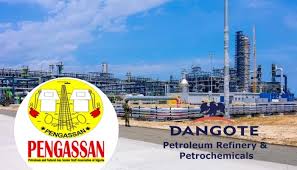Ex-APC Chair Ganduje embroiled in multi-billion naira Kano Dry Port ownership scandal

Former Kano State Governor Abdullahi Ganduje secretly transferred the state government’s 20 per cent stake in the Dala Inland Dry Port Nigeria Limited to private hands and also made his children co-owners of the company before awarding a contract worth more than N4 billion to provide infrastructure for the project.
The transfer effectively edged Kano State out of the project’s ownership and positioned Mr Ganduje’s children as directors and shareholders. Shortly after, Mr Ganduje, then governor, awarded a contract for works that were originally the state’s responsibility under its equity agreement, reports PREMIUM TIMES.
Mr Ganduje, who resigned this year as national chairman of Nigeria’s ruling All Progressives Congress (APC), governed Kano between 2015 and 2023.
How Kano acquired stake in dry port
On 4 September 2006, nearly a decade before Mr Ganduje assumed office, the Kano State Government purchased a 20 per cent stake in the Dala Inland Dry Port Limited under Governor Ibrahim Shekarau’s administration.
Mr Shekarau’s commissioner for commerce, industry, and cooperatives, Ahmad Yakasai, conveyed the government’s approval.
The acquisition followed the federal government’s 2003 port development policy, which encouraged private development of ports while allowing the federal and host state governments to retain minority stakes.
The policy capped private investors’ stake at 60 per cent and reserved 20 per cent each for the federal and state governments.
The policy required the government to lease out ports it had already developed to private investors for 15–25 years, depending on the equipment installed. Where private investors were the primary developers, the policy specified that federal and state equity participation was to be limited.
Strategically located in Kano, the commercial hub of northern Nigeria, the Dala Inland Dry Port was conceived to ease import and export processes, reduce transit times, and facilitate trade with neighbouring landlocked countries like Niger, Chad, and Cameroon.
In August 2020, the federal government granted the facility the status of a port of origin and final destination for goods entering or leaving Nigeria. It also designated it a logistics-free trade zone. The port spans 35 hectares, with another 165 hectares earmarked for free zone enterprises.
.
The port was founded in 2003 and privately developed by Kano businessman Ahmad Rabiu.
In line with federal policy review, Kano State acquired 20 per cent equity in 2006. At inception, Mr Rabiu retained 80 per cent ownership, while the state held 20 per cent.
On 16 May 2006, Mr Rabiu signed a build, own, operate, and transfer (BOOT) agreement with the federal government.
At a tripartite meeting on 22 June 2006, involving the state government, Maersk Sealand (an international shipping giant), and Dala Inland Dry Port Limited, the parties agreed on participation levels of each stakeholder.
According to a classified document seen by PREMIUM TIMES, Kano State committed to paying for its 20 per cent equity by providing infrastructure —roads, fencing, electricity, and water—at the Zawachiki project site in Kumbotso Local Government Area of the state.
However, Mr Shekarau, who served two consecutive terms as the governor of Kano between 2003 and 2011, did not execute any infrastructural project at the dry port.
His successor, Rabiu Kwankwaso, whose second non-consecutive term ended in 2015, also ignored the state government’s commitments to the port.
On the other hand, Maersk Sealand, initially a technical partner with the intention of taking equity shares, withdrew due to the state’s lack of commitment to the project.
Maersk Sealand primarily invests in floating assets. However, the company also participates in joint ventures for projects such as the Dala Inland Dry Port.




